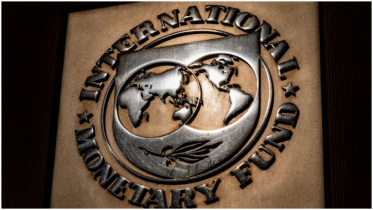Living with increased global economic volatility

The new political and economic order that was established after the end of World War II has perhaps been one of the most welfare enhancing episodes of human history.
Not only have human societies collectively experienced no serious outburst of global conflicts that led to the deaths of millions and destruction of continents — an event that happened twice within the first half of 20th century — but the major political and economic actors across the globe were also able to weave out an economic space that has lifted billions out of extreme poverty and triggered a more than three-fold rise in global per capita income between 1961 and 2019.
Yet, any serious reading of the economic headlines from around the globe no longer instil any optimism. Record rise in inflation across countries, serious doubts concerning the financial model of the West post-2008 Global Financial Crisis, and increasing inequality both within advanced and developing countries makes one question: where is the global economy heading?
But, to rigorously understand how the future might unfold, we have to look at the disaggregated story: How did different regions perform over the last five decades? Is the rise in economic volatility a regional or shared phenomenon? Moreover, are the current economic concerns a short-run economic glitch or are they driven by growing structural fault-lines in the global economic structure?
To shed some light on these imperative economic inquiries, it is pertinent that we evaluate some of the stylised facts that emerge from a disaggregated evaluation of the global economy over the last five decades.
More specifically, if we examine how growth has evolved and fluctuated over the last five to six decades across different regions, we come across five stylised facts.
First, while global per capita income has increased more than threefold over the last five decades, this economic story masks stark regional differences in living standards across the world. For instance, if we compare per capita income across regions, we can see that average income in the EU or the OECD is more than 20-fold higher than an average Sub-Saharan African or South Asian; and around four-fold higher than an average Latin American.
In other words, regional differences in income per capita remains sturdy even though there was an expectation that economic liberalisation and globalisation after the 1990s would help economic convergence across countries.
Second, world economic growth has experienced a secular decline between 1960 and 2021 with some signs of increased volatility after 2000. This is most likely due to the Global Financial Crisis in 2008 and the after-effects of Covid-19. Interestingly, the average decade-wise growth fell for every major region between 2011-2021 — a unique phenomenon that was not witnessed between 1960 and 2000.
Third, East Asia and the Pacific experienced improved economic performance until 2010 after which there has been some slowdown. It remains, nonetheless, a region with the fastest economic growth over the last five decades.
Moreover, the volatility in growth in the region improved drastically after 1970 and remained largely unchanged since then, with some deterioration in the 1990s. Yet, East Asian volatility in economic growth has remained one of the lowest compared to other major regions between 2001 and 2021.
Fourth, the average economic growth in South Asia has largely improved over time. Volatility in economic growth was also low between 1980 and 2010, but has deteriorated sharply between 2011 and 2021, making it one of the most volatile regions in the last decade.
This trend is evident if we observe what happened as of late in Pakistan and Sri Lanka, where serious macroeconomic instability has forced their governments to seek economic bailouts from international lending agencies. Indian growth also suffered badly during the pandemic years.
Fifth, economic growth within the EU and OECD has experienced a secular decline between 1961 and 2021. Additionally, it is essential to notice that they have experienced very low economic volatility between 1980 and 2000; yet, volatility in economic growth has almost doubled in the last two decades.
On the whole, the evolution of economic growth across all major regions over the last five to six decades is indicative that macroeconomic volatility has been on the rise over the last two decades, and there is no reason to believe that the future is any less vulnerable to economic shocks.
This rise in global economic volatility is a serious phenomenon that deserves more rigorous scrutiny by experts and policymakers as it has coexisted with lower economic growth.
This also marks a departure from what was experienced between 1960 and 2000, when economic volatility experienced a sustained decrease. Of course, while there is no clear consensus concerning why regional economies are experiencing more volatility, there are reasons to believe that the economic volatility that is originating in advanced economies — due to blanket deregulation of the financial sector, growing trade imbalance with the East, acute rise in economic inequality and growing public sector debt — is now hurting the rest of the world due to increased economic and financial linkages over the last two decades.
In other words, globalisation and increased market and financial linkages has made economic volatility a shared phenomenon, which should compel policymakers in developing countries to remain vigilant and responsive to economic events and downturns in the advanced economies.
The ongoing macroeconomic situation in Bangladesh also indicates the pitfalls of not reflecting the global economic developments in our domestic economic policymaking. By keeping the exchange rate against the US Dollar virtually fixed for almost 10 years until 2023, despite relatively higher domestic inflation compared with trading partners and export competitors, the authorities had made imports cheaper and exports uncompetitive leading to huge balance of payments deficits in 2022 in both the external current account and the overall balance.
Forcing the interest rate range to be bound within a 6-9% range — when major central banks were increasing policy rates led by the US Federal Reserve — prevented the Bangladesh Bank from supporting the exchange rate of Taka and also from putting up a fight against the rising inflation in the post-pandemic global economy.
The results were severe macroeconomic instability characterised by a sharp depreciation of Taka, loss of forex reserves in the amount of $24 billion, downgrading of Bangladesh's credit rating by the major rating agencies, a large and growing financial account deficit, and a persistently high domestic inflation.
These outcomes could have been much better managed had the government reflected the global economic developments in our policy domestic formulation proactively and in a timely manner.
Furthermore, given globalisation and increased market and financial linkages has made economic volatility a shared phenomenon across regions, policymakers in developing countries like Bangladesh should no longer feel that they can formulate monetary or fiscal policy decisions in isolation.
In other words, the developing and emerging economies are no longer insulated from global economic volatility, and economic teams within central banks or ministry of finance across developing countries must carefully follow and factor-in global economic parametres, so that they can craft their own macroeconomic response to cushion their respective domestic economy from any undesirable changes within the global economic space.
Moreover, if any policy regime chooses to ignore this reality, then the recent history makes it evident to note that the brutal invisible hand of the market will not allow such mistakes to go unpunished.
Writer: Dr Ahsan H Mansur is the Executive Director at the Policy Research Institute (PRI). Dr Ashikur Rahman is the Principal Economist at PRI.
Source: The Business Standard.
.png)




